Henricus Historical Park is a 32 acre living history museum located along the James River, just south of Richmond. We have a dedicated group of interpreters and volunteers who portray the daily lives of English soldiers, tradesmen, indentured servants, the goodwives & single women, and Native Americans who lived in the areas of Coxendale and Henrico between the years 1611 to 1622. To do that, we have 13 structures on site, in which we interpret the 17th century. We perform the activities and chores, wear the same types of clothing, and eat the same meals they may have done 400 years ago.
As interpreters, we use "encounter third-person interpretation" to speak to visitors. So if you were to speak to us, we'd speak to you from a modern perspective. But for special occasions, we might break out the character interpretation. :)
To give you a glance around the site, I thought I'd post a few pictures. We had a rare occurrence on Monday: 4" of snow! (More about that later!) I hope you enjoy a look at the Henricus buildings in the snow...
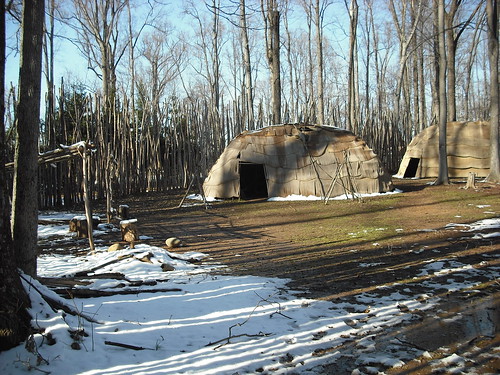
This is the Powhatan village where we interpret the Native Americans who lived in Virginia 400 years ago. Arrohateck (the name of this particular village) is mostly used for school programs.

Walking from Arrohateck, you enter into the English village. The first place you'll see is 1611, the Court de Guard, where sergeants of the guard would spend their time in the fort at Henricus.
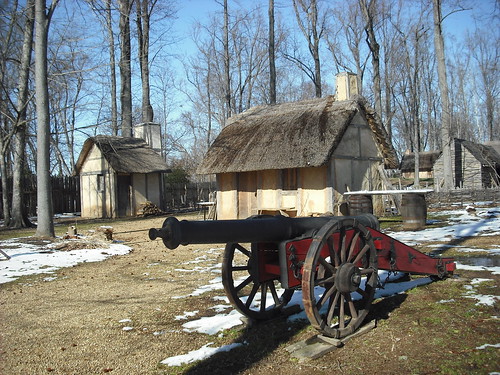
Up the road from the Court de Guard is the trades area. Here we have the Citie barn, which is where our carpentry shop is located. There is also our working blacksmith's forge where the blacksmith and his apprentice work.
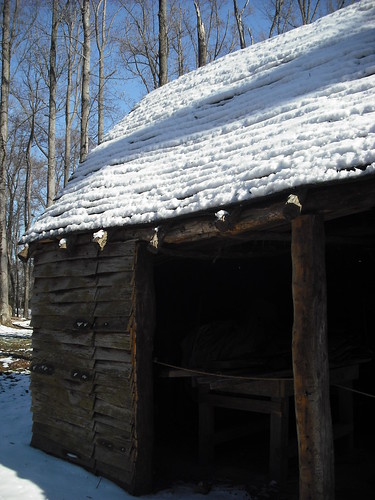

As you leave the trades area, the road takes you past the tavern, which we use for school programs and events. It is modeled after the 1640s Ordinary at St. Mary's City.
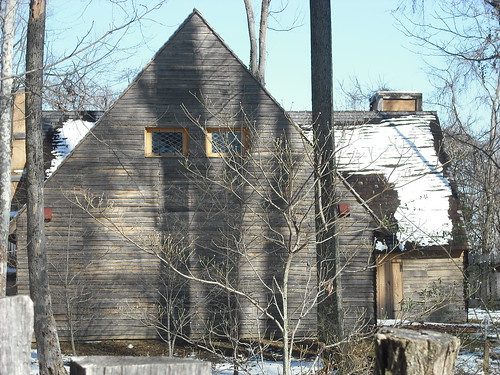
The original "Mount Malado" was built on a hill over looking the James around 1614. It would have served as a guesthouse for colonists just arriving to Virginia, but it is credited as being the first English hospital. Our recreation of Mount Malado is a lot smaller than the original, which would have had 80 beds and five fire places.
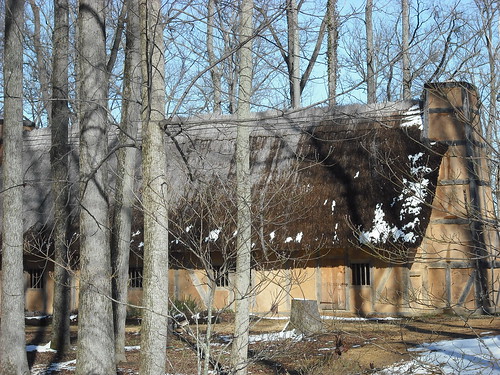

The next building being constructed at Henricus Historical Park is "Rocke Hall". This was the parsonage for Reverend Alexander Whitaker. Right now, it looks like a swimming pool, but that is the foundation for what will be a really cool two story structure once it is finished.

Following the path from Mount Malado and Rocke Hall, you'll come across the tobacco plantation. This represents a farm from the 1620s. We don't have a lot of animals living there right now - just chickens. The barn is solely for tobacco. The house is a typical dwelling of a yeoman farmer.
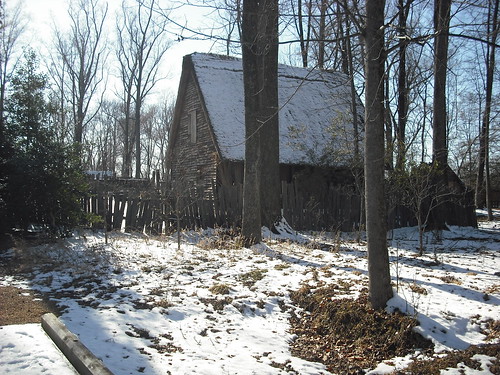
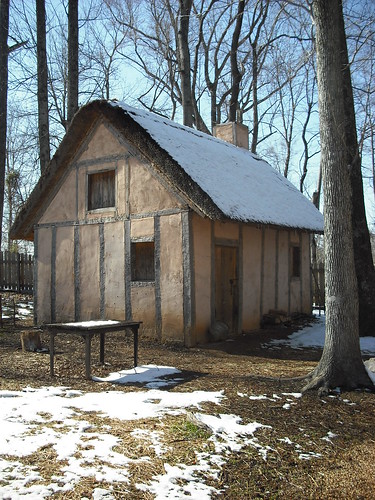

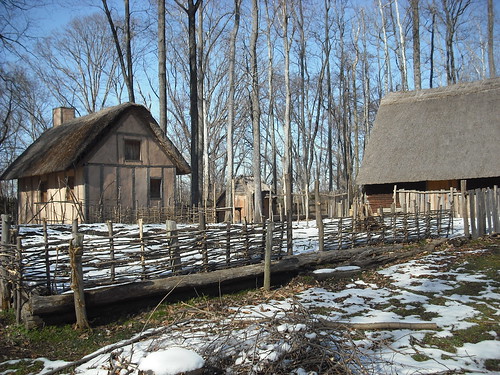
I'll go into more detail on the buildings in a later post, but that's the basic tour around the buildings. I hope you enjoyed seeing Henricus in the snow!
Stay tuned!
Jenny
Historical Interpreter, Domestic Skills





Jenny,
ReplyDeleteI made my first visit to Henricus on Saturday, May 23. The interpreters did an OUTSTANDING job of "third person encounters." Really looking forward to seeing the park develop in the future. My visit has inspired me to research a little on the "appearance" of early seventeenth century Henricus. It'll be fascinating to see what "reliable" accounts exist.
The third person encounters must pose interesting challenges for all of you. It's hard to beat Plimoth Plantation for first person, but I thought EVERY interpreter with whom I spoke was engaging, knowledgeable, and believable...just an eyelash away from first person. As I left, I was wondering how they did it--almost as convincingly as the Plimoth interpreters, but in a different style.
Thanks again. I am guessing I missed the opportunity to meet you when I walked by the women at laundry. I'll be back for many more trips.
John Montague
Raleigh, NC
Jenny,
ReplyDeleteI made my first visit Saturday, May 23, to Henricus Park since the buildings have been reconstructed. The interpreters did an OUTSTANDING job engaging the visitors (including me), even in the "third person encounter" style you describe. Having been to Plimoth Plantation, I would have had a hard time believing the third person style would work so well. But, it was very effective.
Hopefully, I'll be making many trips in the future.
Thanks for a great visit.
John
Raleigh, NC